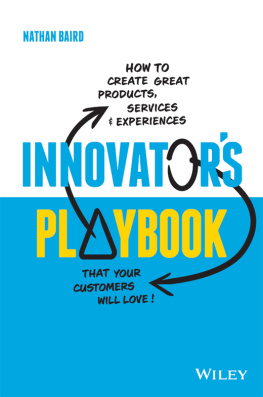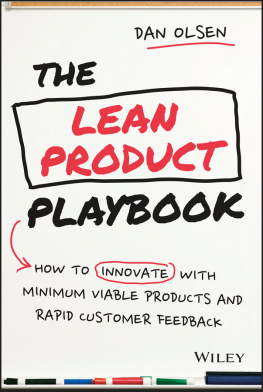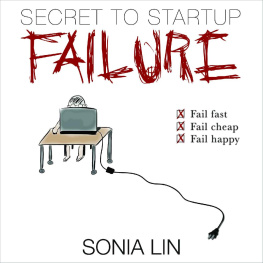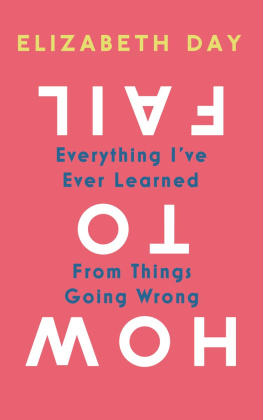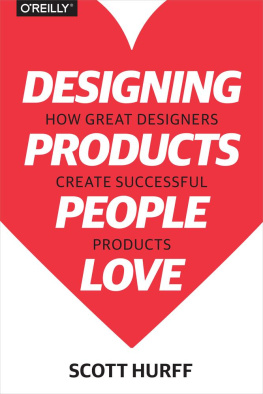Victor Lombardi - Why We Fail
Here you can read online Victor Lombardi - Why We Fail full text of the book (entire story) in english for free. Download pdf and epub, get meaning, cover and reviews about this ebook. year: 2013, publisher: Rosenfeld Media, genre: Computer. Description of the work, (preface) as well as reviews are available. Best literature library LitArk.com created for fans of good reading and offers a wide selection of genres:
Romance novel
Science fiction
Adventure
Detective
Science
History
Home and family
Prose
Art
Politics
Computer
Non-fiction
Religion
Business
Children
Humor
Choose a favorite category and find really read worthwhile books. Enjoy immersion in the world of imagination, feel the emotions of the characters or learn something new for yourself, make an fascinating discovery.

- Book:Why We Fail
- Author:
- Publisher:Rosenfeld Media
- Genre:
- Year:2013
- Rating:3 / 5
- Favourites:Add to favourites
- Your mark:
- 60
- 1
- 2
- 3
- 4
- 5
Why We Fail: summary, description and annotation
We offer to read an annotation, description, summary or preface (depends on what the author of the book "Why We Fail" wrote himself). If you haven't found the necessary information about the book — write in the comments, we will try to find it.
Why We Fail — read online for free the complete book (whole text) full work
Below is the text of the book, divided by pages. System saving the place of the last page read, allows you to conveniently read the book "Why We Fail" online for free, without having to search again every time where you left off. Put a bookmark, and you can go to the page where you finished reading at any time.
Font size:
Interval:
Bookmark:
LEARNING FROM EXPERIENCE DESIGN FAILURES
Victor Lombardi

Why We Fail
Learning from Experience Design Failures
By Victor Lombardi
Rosenfeld Media, LLC
457 Third Street, #4R
Brooklyn, New York
11215 USA
On the Web: www.rosenfeldmedia.com
Please send errors to:
Publisher: Louis Rosenfeld
Developmental Editor: JoAnn Simony
Copyeditor: Ben Tedoff
Interior Layout: Danielle Foster
Cover Design: The Heads of State
Cover Illustration: John Gall
Indexer: Nancy Guenther
Proofreader: Kathy Brock
2013 Victor Lombardi
All Rights Reserved
ISBN: 1-933820-17-9
ISBN-13: 978-1-933820-17-0
LCCN: 2013939950
Printed and bound in the United States of America
For everyone brave enough to design into existence something entirely new in the hope of improving our world
Designers, product managers, project managers, marketers, and general managers will derive particular practical benefit from this book, as these are the roles I had in mind while writing. Yet I was careful to avoid unnecessary jargon so others with an interest in the technology industry can enjoy it as well.
starts with a story of one of my own professional failures. This first-person perspective will give you a sense of what that experience feels like as a product designer and how we can fail to learn from failure. I then argue that digital technology is becoming a vital part of everyday life and is too important to screw up. I show how we learn from failure, and how customer experience failure is new and different from engineering or design failure. Finally, I explain the criteria I used to select the case studies for this book.
includes the stories of BMWs iDrive telematics system and Googles Wave groupware service, illustrating how failure can originate early in the product development cycle, while still in the product concept stage.
is about the OpenID authentication service and how rolling out an untested technology standard can lead to hundreds of years worth of frustrating experience.
tells the story of Wesabe, a personal financial management service, and how a successful service with a cutting-edge strategy can be beaten by a competitor that focuses on a great customer experience.
is about the Microsoft Zune media player, a product every bit as good as its rival, but one that failed for social and cultural reasons.
compares Twitter to competitor Pownce and shows how a superior feature set doesnt always result in a superior experience.
profiles the nostalgia site Classmates.com and the contact management service Plaxo. Both displayed ethically questionable business behavior that harmed their customers, yet their stories show that taking the high road isnt always as easy as making a decision to sacrifice some revenue.
covers the Symbian mobile phone operating system and Apples Final Cut Pro X video editing software, two products whose different rates of change pushed them in two different directions, both of which disappointed customers.
synthesizes the underlying reasons for failed experience designs and points to quality-control methods from other industries to show a way forward.
reviews the recent history of applying quality-control ideas to design, software development, and business ventures, and then complements these with a method to avoid customer experience failure in our own work.
This books companion website ( rosenfeldmedia.com/books/why-we-fail/ ) contains a blog and other materials related to the book. The books diagrams and other illustrations are available under a Creative Commons license (when possible) for you to download and include in your own presentations. You can find these on Flickr at www.flickr.com/photos/rosenfeldmedia/sets/ .
rosenfeldmedia.com/books/why-we-fail/ ) contains a blog and other materials related to the book. The books diagrams and other illustrations are available under a Creative Commons license (when possible) for you to download and include in your own presentations. You can find these on Flickr at www.flickr.com/photos/rosenfeldmedia/sets/ .
Of the ten products profiled in this book, four of them are websites (Classmates.com, Wave, Pownce, and Wesabe), two of them are services (Plaxo and OpenID), one is a software package (Final Cut Pro X), one is an operating system (Symbian), and two are hardware-based (iDrive and Zune). They were all generally created in the United States and Europe. All of them were designed for consumers rather than for businesses.
I began my research by surveying dozens of failed productsfrom small unheard-of start-ups to Boo.com, which spent more than $100 million; and from early consumer software such as WordStar to the most recent video games. I then focused on products that tried to innovate. There are certainly many examples of failed products that were attempts to copy others, or were simply incremental improvements over what came previously, but those cases arent as interesting or instructive. I also excluded products that failed merely because the creators were incompetent or whose lessons are outdated or irrelevant. See for a longer explanation.
The failures in this book are customer experience failures. The products somehow failed to offer their audiences a good experience. As a result, the product either failed in the marketplace (e.g., Symbian) or the company was forced to change the product to offer a better experience in order to survive in the marketplace (e.g., Plaxo). has more examples of this definition.
This was often the case in the past when products were simpler and could be judged by their list of specifications, such as the speed of the processor or how many colors the screen could display. But todays digital products are so complex we engage with them differently. A product such as a smartphone may seem good based on how it looks and its list of I point to some videos that nicely illustrate the difference between design and experience.
Sometimes, but for this book I tried to find stories that revealed more interesting, less obvious lessons. For example, a product might work fine for one audience but fail when given to a different audience (e.g., OpenID). Or one aspect of the experience we think might be vital, such as a website that is always available, doesnt beat a competitor whose website is often down for maintenance (e.g., Pownce). Or two similar products might offer a similar experience to the consumer, but one might fail because of cultural and social reasons (e.g., Zune).
In any case, I also look behind the experiential reason for failure to find what caused that failure. See the Why the Experience Failed and The Underlying Cause sections in the Summaries that end .
Products can fail for many reasons, from malfunctioning technology to ineffective marketing. This book focuses on customer experience failure because its relatively new and not enough has been written about it to date.
Font size:
Interval:
Bookmark:
Similar books «Why We Fail»
Look at similar books to Why We Fail. We have selected literature similar in name and meaning in the hope of providing readers with more options to find new, interesting, not yet read works.
Discussion, reviews of the book Why We Fail and just readers' own opinions. Leave your comments, write what you think about the work, its meaning or the main characters. Specify what exactly you liked and what you didn't like, and why you think so.

